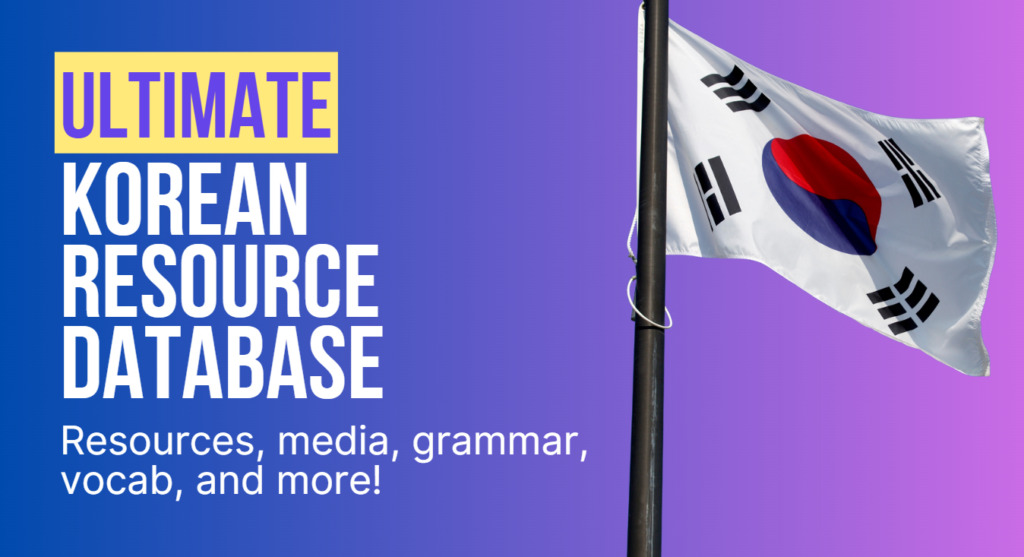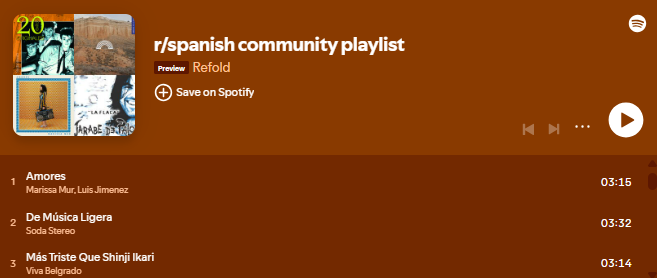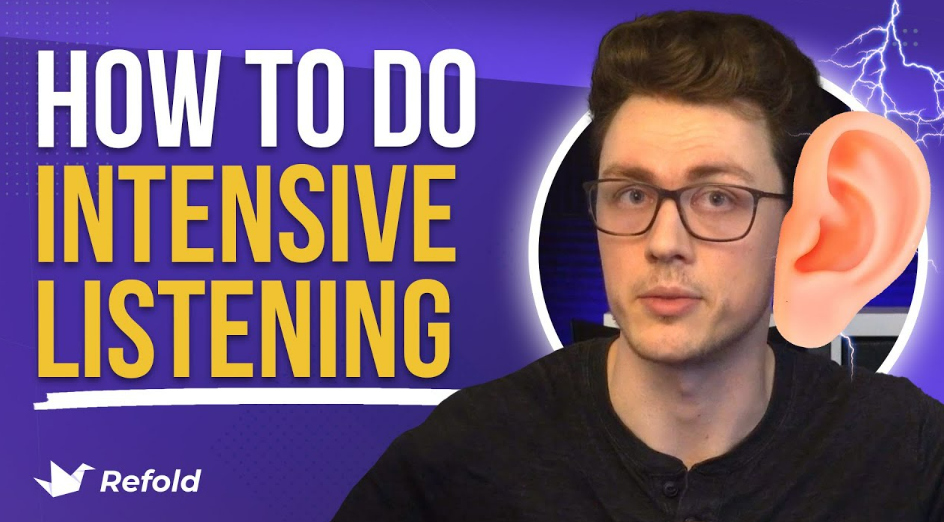With the Refold method, of course!
The original Refold roadmap was written to answer the question: “How can anyone acquire a foreign language?”
Ethan, the CEO of Refold, partnered with Matt vs Japan to create the first, complete guide to language fluency through at-home immersion. Over 5 months of full time work, they debated, interviewed, wrote, and rewrote hundreds of essays that eventually became the incredible Refold Roadmap that has helped tens of thousands of people reach fluency (myself included).
But it was never meant to be the “final” guide. The one method to rule them all. It was a first version based on their combined obsession with finding a better way to learn languages. The first version didn’t even launch with a complete Stage 4! It was always meant to evolve.
As the Refold community has grown and we’ve started coaching learners and making courses, we kept exploring immersion learning and deepening our understanding of the process. The original roadmap was great, but had a few core issues. The biggest one was the comparative weakness of Stages 3 and 4. There was a lot less experience and information to draw from when making those stages. Stage 2 also was a behemoth and needed some refinement. There were also frequent questions about when to move between stages.
These issues, along with all our learning, has led us to build an internal model, a “new” roadmap, that we use for clients and our products, which guides the way we think about language learning.
We haven’t been able to officially work on or publish a Roadmap 2.0. Spending months of time to craft a complete document isn’t something we’re able to spend time on (yet).
But we really want to get these ideas out there! Which is why I’m writing a series of blog posts, covering each of the new phases of our more updated method.
There will be 8 posts (including this one), which I will try to release as regularly as possible.
What’s changed?
The new method is very similar to the original, despite looking very different at first glance. This is mostly due to the different numbering system. The original method used 4 Stages:
- Lay the Foundation
- Build Comprehension
- Learn to Speak
- Beyond Fluency
This turns out to be a little too simplified and meant that Stages 2 and 3 were overloaded and were where you spent a majority of your time.
The new 7 Phases split the process up a little more evenly and make it easier to know when to pass from one to the next.
- Foundation 🏦
- Reading 📖
- Listening 🎧
- Speaking 🗣️
- Writing ✍️
- Fluency 💬
- And Beyond 🚀
The original Stage 1 is more or less the same as Phase 1.
Stage 2 (Build Comprehension) was split up into Phases 2 and 3 (Reading and Listening).
Stage 3 (Learn to Speak) became Phases 4, 5 and a little bit of 6 (Speaking, Writing, Fluency).
And then Stage 4 is covered a bit by the end of Phase 6 and all of Phase 7 (And Beyond).
You’ll also notice the simplified names we’re using for the new Phases. These names more closely match the different skills that people think about in regards to learning a new language.
💡 Each of these phases is named after the core focus, but there are many other skills involved.
During the Speaking phase, for example, your primary focus is on speaking ability, but you’re also continuing to do lots of listening, reading and even a bit of writing. But having a clear “focus skill” makes it easier to know when to move on to the next level.
That’s another goal with this new system. Defining when to move on to different Phases (or sub phases). A lot of people struggled to know when to move from Stage 2C to Stage 3, as an example. The new sub-phases have specific criteria that you can quickly reference and know if you should move on.
The phases are meant to be done in order, but each learner has slightly different needs, interests, desires and goals. A certain amount of customization of the method is required to be successful. This is something we also want to highlight in this new guide.
One key piece we wanted to add was a rough estimate of your level in each core skill (reading, listening, writing, speaking) you’ll achieve in each phase. This provides expectations that you can measure yourself against Immersion learning doesn’t improve reading, writing, listening and speaking at the same time. For more information, check out the section below called Table of Skills.
If you want a sneak peek of the preliminary Table of Contents, here it is. Please keep in mind that these blog posts are only able to cover the overview of each Phase and will not be going in depth on any of the sub-phases. Also, it’s not set in stone and is subject to change.
New Method Table of Contents
- Phase 0 – Immersion Learning 📓
- Acquisition vs Learning
- Enjoy the Process
- Immerse in the Language
- Learning Overview
- Phase 1 – Foundations 🏛️
- 1A – The Absolute Basics
- 1B – Tracking your Learning
- 1C – Begin Comprehension
- 1D – Get Comfortable
- Phase 2 – Reading 📖
- 2A – Learn the Core Words
- 2B – Develop your Comprehension
- 2C – Solidify your Reading
- Phase 3 – Listening 🎧
- 3A – Overcome the Listening Gap
- 3B – Choosing a Dialect
- 3C – Core Listening Skills
- 3D – Understand Native Conversation
- Phase 4 – Speaking 🗣️
- 4A – Preparing for Output
- 4B – Speaking Comfort
- 4? – Situational Speaking <- optional
- Phase 5 – Writing ✍️
- 5A – Writing Comfort
- 5B – Writing Accuracy
- 5C – Speaking Accuracy
- Phase 6 – Fluency 💬
- 6A – Output Automaticity
- 6B – Vocabulary Gaps
- 6C – Lots of Practice
- Phase 7 – And beyond 🚀
- 7A – Domain Domination
- 7B – Go to School
- 7C – Effortlessness
- 7D – Going “Native”
- 7? – Proficiency Test
New Method Learning Overview
The rest of this article is dedicated to a quick tour through what you’ll be working on in each phase.
Phase 1: Foundations
The primary learning approach for the entire Refold method is immersion in the language and comprehending messages. This allows your brain to learn the patterns and develop fluency subconsciously. But, you must actually comprehend things in order to learn1.
But, how do you understand anything if you’re a beginner?!
That’s what this foundations phase is for. You’ll be using basic vocabulary and grammar study alongside simple language in order to slowly turn the gibberish that is your target language into… less gibberish.
Your primary goal isn’t to understand much, but rather to feel comfortable with the learning process and with the sensation of not understanding. You still won’t understand much by the end of the phase, but you will have a strong learning process set up to make incredible progress in future phases.
Phase 2: Reading
You want to increase your comprehension of the language as quickly as possible, so that you spend the maximum amount of time understanding. Which is why you’ll start with reading. It’s generally much easier than listening and allows you to use your adult literacy skills to make rapid progress.
However, you will NOT be ignoring listening. Through the entire reading phase, we recommend you only do reading along with audio. This makes sure to train your ears to hear the language and not only rely on the text.
When we use the word reading, we’re not referring just to books or articles. Anything with text is considered reading. Some of the best resources during this phase are TV shows and YouTube videos as they usually have subtitles to go along with the audio.
It’s slightly counter intuitive, but we don’t recommend doing “pure reading” in this phase (like with books). These kinds of texts use much more formal language and a wider range of vocabulary. Reading written versions of spoken content naturally narrows your focus on common, every day speech.
During this phase, you’ll be focused on learning lots of new words and getting used to understanding the language with the help of text.
By the end of the reading phase, you’ll be able to understand things (when reading) at a fairly high level, certainly far ahead of any traditional learners.
Phase 3: Listening
Focusing on reading first creates a “reading and listening gap,” where your reading ability is much better than your listening ability. This means:
- You will feel a sudden drop in ability when switching to listening,
- But you will improve very rapidly as your ears catch up with your knowledge.
This drop in comprehension is uncomfortable! It feels like all your hard work vanishes in a few minutes. But you aren’t starting from nothing. You already know so much from your time spent on reading and adapting your ears to hear it takes much less time.
Towards the end of the phase, you will turn your focus to conversations to prepare you for speaking.
By the end of the listening phase, you’ll have closed the reading listening gap and be able to understand a regular conversation when just listening.
A big difference from the original roadmap is that it advised perfect (or near perfect) listening before starting to speak. This new model has you continuing to develop your listening while you start to speak.
Phase 4: Speaking
The first step when starting to output is to develop comfort with output. By this point, you’ll be extremely comfortable understanding the language, but you’re brand new to output, and it will suck. The first 50 output hours should be dedicated to getting used to speaking and becoming comfortable.
It might seem like writing would be easier to start with, since you can take your time and think through what you want to say. But this causes overthinking and gets in your way of improving your speaking.
This is another difference from the original roadmap. The recommendation was to start with writing because you could take your time. In practice, writing is much better for finding and improving mistakes than it is for building initial comfort.
In the beginning of the phase, you’ll start with some solo speaking practice to make sure your comfortable producing the sounds and rhythm of the language, as well as mentally preparing yourself for a first conversation.
This preparation is important because you will be able to hear a lot of your mistakes and awkward phrasings, despite just starting to speak. This is a good thing, even if it might feel bad. You’ve spent so much time on input (reading/listening) that you have an input output gap, much like in Phase 3. So your first focus is to get over that initial difficulty and build speaking comfort by speaking a lot.
There’s an optional part of this phase which is practicing specific situations and making sure you’re comfortable doing common things in the language. This is useful if you live somewhere with lots of speakers of the language or want to travel and use it. But this sub-phase can be done at any time.
By the end of the speaking phase, you’ll be able to speak and have a real conversation with a native speaker. You’ll still make mistakes, but be well on your way to fluency. Finishing this stage is roughly equivalent to reaching B1, perhaps a bit further.
Check the table below for more specific CEFR level estimations.
Phase 5: Writing
After getting over the initial hurdle of speaking comfort, the next focus is accuracy. Developing your writing is perfect for this, for the exact reason you wanted to avoid writing when just starting to output. You can think about what you’re trying to express and study more formal grammar to make sure your writing is not only understandable, but correct.
You’ll be using your writing and grammar study to also improve your speaking, slowly reducing your errors and unclear phrasing. This focus on grammar and being more correct will likely slow your output down (but we deal with that in Phase 6).
By the end of the writing phase, you’ll be comfortable speaking and writing around the level of a high school student. You’ll still make mistakes and using the language at that level will still require a good amount of effort. Finishing this stage is roughly equivalent to reaching B2.
Check the table below for more specific CEFR level estimations.
Phase 6: Fluency
Once you’re comfortable and fairly accurate in the language, all that’s left is to increase your fluidity and naturalness, turning you into a fluent user of the language.
This phase is dedicated to developing your automatic use of the language and solidifying everything from the previous five phases. You will also be spending time filling any gaps in your knowledge, making sure that there’s nothing you skipped over.
And of course, lots and lots of practice. Everyone’s definition of fluency is different, but this phase aims to bring you to “functional fluency.” Which means you can live your life, entirely in the language, without it drastically impacting your ability to function. You’re able to have a social life, live in a country that only uses that language, navigate the world, hold a job, and enjoy media.
Finishing this stage is roughly equivalent to reaching C1.
Check the table below for more specific CEFR level estimations.
Phase 7: And beyond
Once you’re fluent, your journey doesn’t stop! You are now a user of the language and it’s become a part of your life, a part of who you are. During the following years, you will continue to read, write, listen, speak and generally use the language, learning more along the way.
But there are specific things you can do to increase and deepen your fluency purposefully. In this phase, you can focus on becoming an expert in certain areas of the language. Or perhaps put yourself through the motions and lessons that a native speaker would have done during their years of schooling.
Phase 7 is technically never ending, so it will be a never ending journey of discovery and learning.
📰 Pursuing a proficiency test (like passing the C2 or equivalent) is also something you might want to do in this phase! Or you might want to do it earlier on. We put it into Phase 7, but if you need to pass the B2 exam for some reason, you can absolutely study for (and pass) the test earlier in the method.
Table of Skills
The Refold method develops your language skills in a non-standard order. The CEFR scale2 assumes that your reading, listening, writing and speaking skills all progress at roughly the same rate. In order to pass a B2 exam, you generally need to have B2 level in all 4 skills (maybe 1 a bit lower than the others).
This doesn’t work with the Refold method. We prioritize skills in a very different order, to help you make progress faster and more effectively. To illustrate the general skill progression, we put together this graph. The level mentioned refers to (more or less) what your level in that specific skill will be at the end of the phase.
| Phase | Reading | Listening | Writing | Speaking |
|---|---|---|---|---|
| 1 🏦 | A2 | A1 | A1* | A1* |
| 2 📖 | B2 | A2 | A1* | A1* |
| 3 🎧 | B2 | B2 | A1* | A2* |
| 4 🗣️ | B2+ | B2 | A2 | B1+ |
| 5 ✍️ | C1 | B2+ | B2 | B2 |
| 6 💬 | C1 | C1 | B2+ | C1 |
| 7+ 🚀 | C2 | C2 | C1** | C2 |
General note: passing an official CEFR test will almost certainly require some study of the testing structure and method. It is unlikely that you’d be able to pass a test of any level without some study.
* During the first 3 phases, you won’t practice your writing or speaking skills at all. If you never speak or write, you can’t really have any level. So these estimations are what you could achieve with a few hours of activating that knowledge, if you were to do that.
** Getting a C2 level in writing requires a specifically high accuracy for grammar and vocabulary knowledge. Even though your other abilities will be at very high levels, in order to officially pass a written exam at the C2 level, almost everyone (including native speakers) needs to do a lot of study.
- Comprehensible input must actually be comprehensible. Even if you listen to 10,000 hours of Cantonese talk radio, if you don’t understand anything, you won’t learn anything. ↩︎
- The CEFR levels are A1, A2, B1, B2, C1, C2. ↩︎







